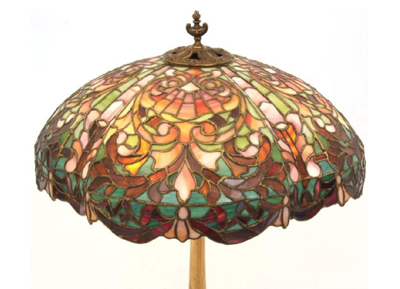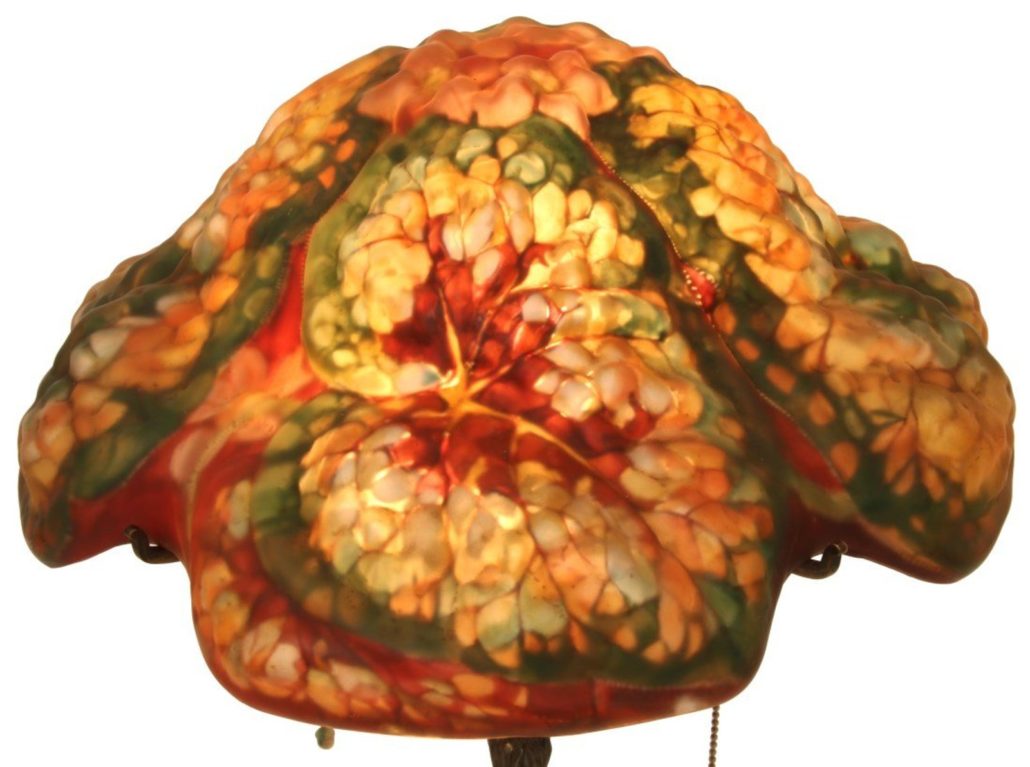
NEW YORK — Tiffany Studios is often the first name that comes to mind when thinking of art-glass table lamps from the early 20th century. While Tiffany was the gold standard, several other companies also made fine-quality glass table lamps. Typically comprised of an elegant handcrafted bronze base topped with an ornate leaded or painted glass shade, lamps by Tiffany Studios’ contemporaries are still popular today. Let’s examine a few of the best who shared Tiffany’s space in the marketplace.
The Pairpoint Glass Company, Sagamore, Mass., produced several varieties of glass lamp shades at the height of the Art Nouveau period, circa 1890s to 1920s, but it is best known for its reverse-painted landscape shades. Artisans would paint the inside of the lampshade, allowing the shade to glow with a warm light and muted colors. While prices overall have been down in the mid-2010s, the rarest examples have fetched six-figure prices.
Among the most desirable are the ones with puffy shades (as seen at top of page). They were difficult to make and decorate, so they were costly to create and still hold their value today. The company also made a semi-puffy lamp. Puffy shades are recognizable for their distinct shape names (Chestnut and Devonshire to name two) and decoration names (e.g., Apple Tree, Rose Bouquet, and Hummingbirds and Roses). Decoration names were often repeated across multiple shape names.
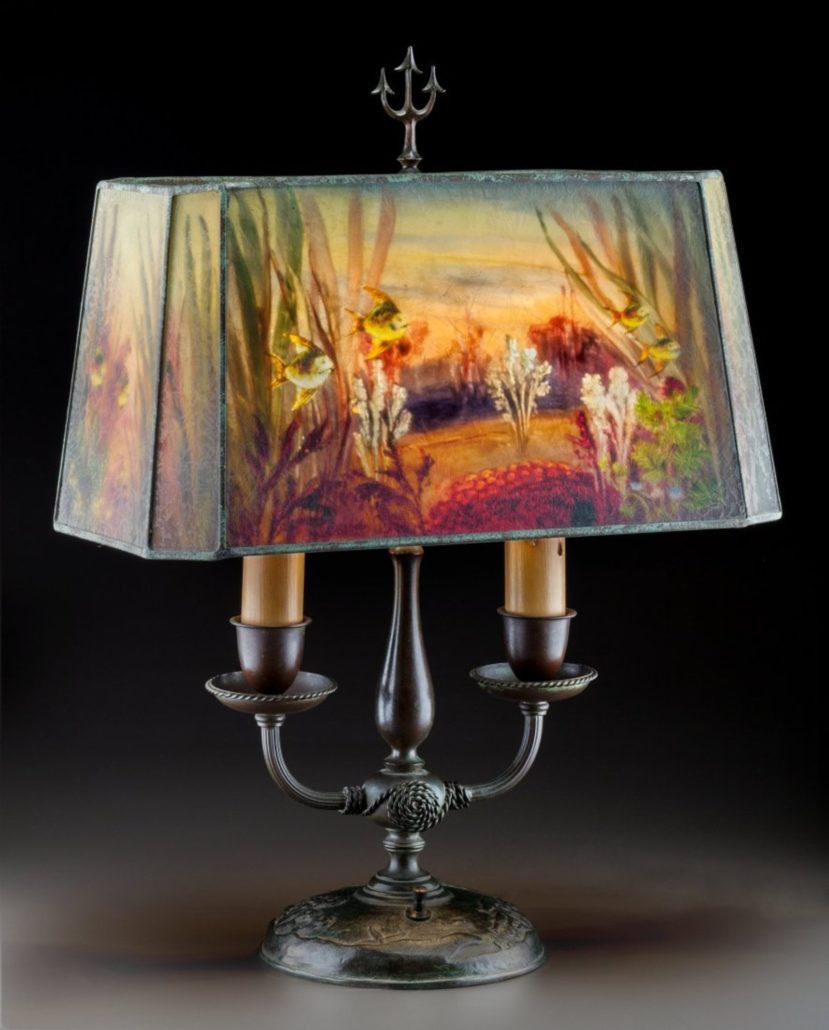
Handel lamps were made in Meriden, Conn., beginning around 1904. Their leaded-glass lamps were similar to Tiffany’s, but the company, under the direction of Philip Handel, also specialized in reverse-painted glass lamp shades. Sizes varied, but their 18-inch shades tend to be the most valuable. Some of the company’s more popular shade designs had floral and naturalistic themes similar to those seen in Tiffany and Handel productions. “Poppy” was a Handel bestseller, but its landscape scenes painted on shades are also highly desirable. Scenes ran the gamut from ocean waves crashing on a rocky shore to woodland forests, autumn landscapes, and Venetian scenes. Handel also made mosaic tiled-glass shades reminiscent of Tiffany’s designs, but in today’s market they are less valuable than those with landscape shades.
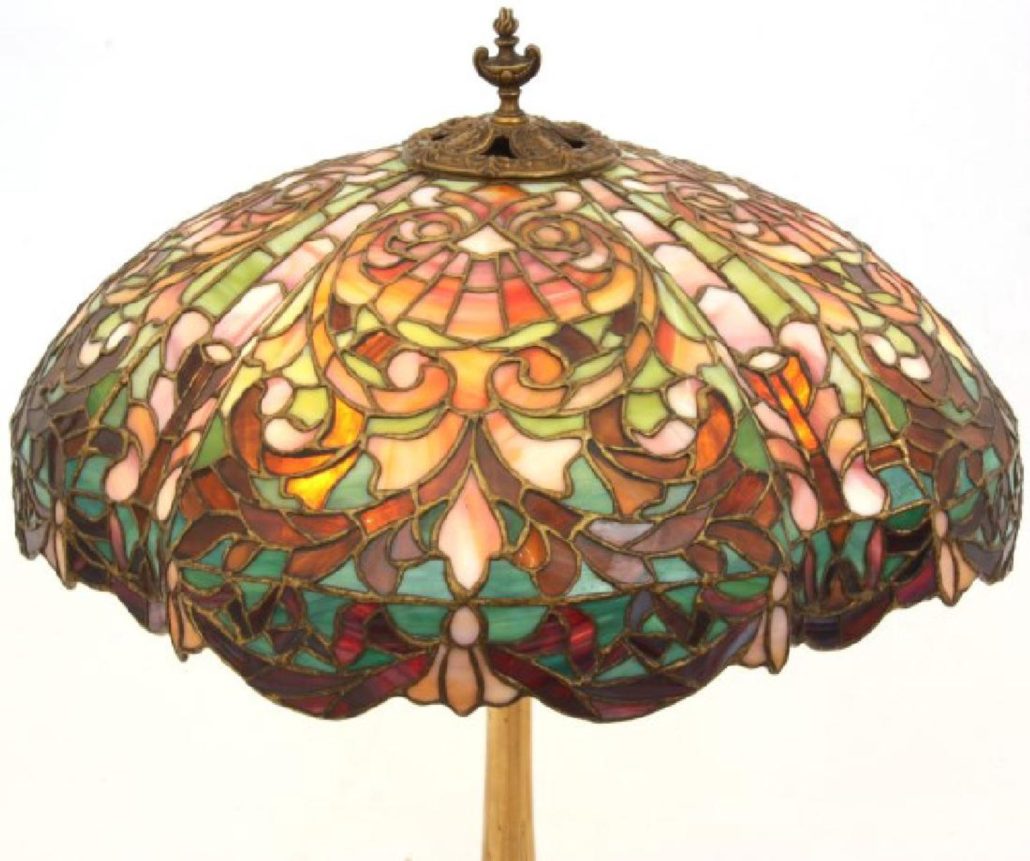
Duffner & Kimberly (D&K) was based in New York City around the same time as Tiffany Studios and debuted their lamps in 1906. Like its competitors, D&K sought out the best designers, including Hamilton Tappan Howell, who came up with many of the firm’s best early designs; and J. Gordon Guthrie, who previously worked for Tiffany. While embracing natural motifs for its table lamps, such as grapes, bamboo, lilies and thistles, D&K’s style of decoration was more formal and less naturalistic than Tiffany’s. Its Louis XV lamp was likely the most well known of all its lamps. Heavily marketed, this lamp was featured in several magazine ad campaigns in 1906. However, beset by financial woes, the company was only in business for seven years and, consequently, had a low output.
Based in New York City, Tiffany Studios set the bar high with its leaded glass lamps. Tiffany’s designs were often emulated, or copied, by competitors.
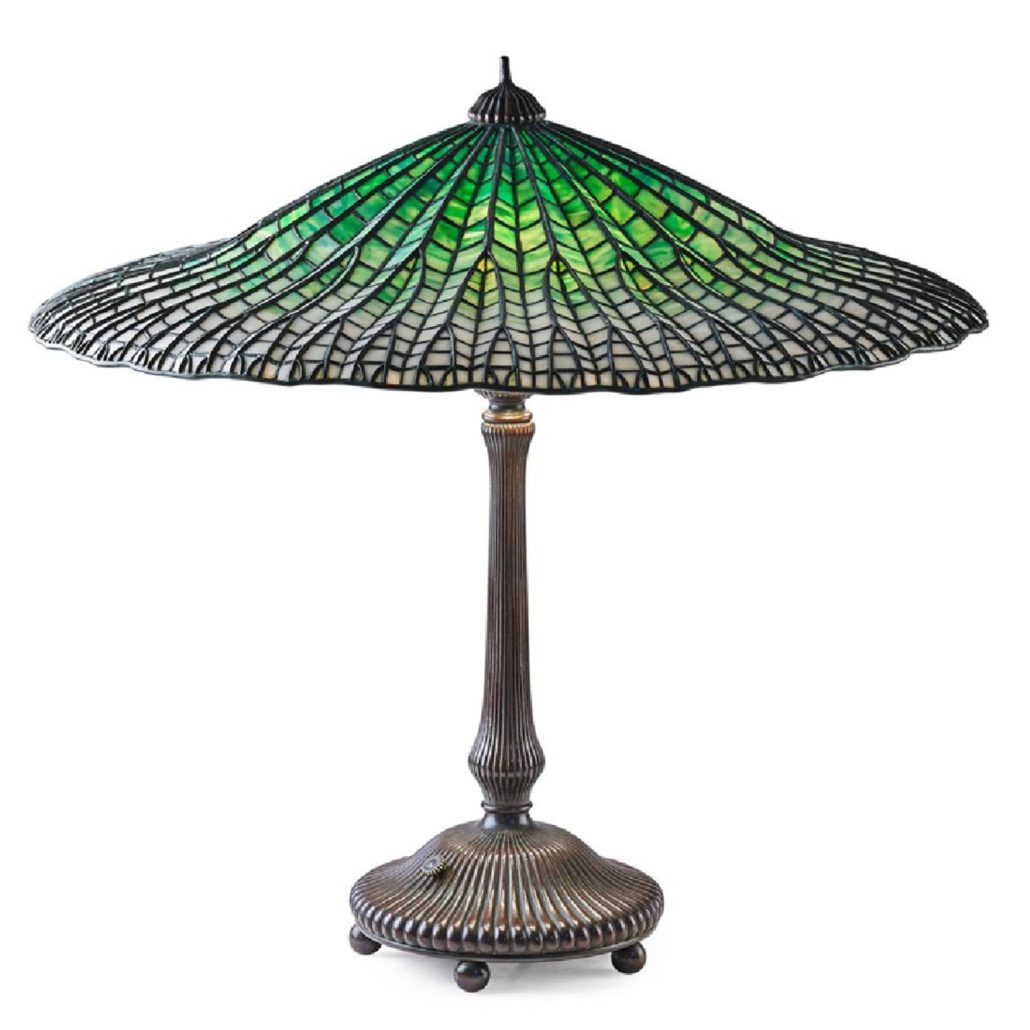
“I like to think that, while Tiffany lamps are collectible, they continue to be popular because they transcend collectability,” said David Rago, Partner and Co-Director, 20th/21st Century Decorative Art & Design Dept., at Rago Arts & Auction Center in Lambertville, New Jersey. “But the deeper you drill into Tiffany, the easier it is to understand them as more than simply pretty. The quality of the casting of the bases, for example, and how the metal pieces are finished off, are cases in point. If you flip over a Tiffany lamp base, the underside, the part most people never or seldom see, is just perfect in its finishing details. There is nothing sloppy or shoddy in Tiffany’s construction, which is most apparent ‘beneath/ the glass shades.”
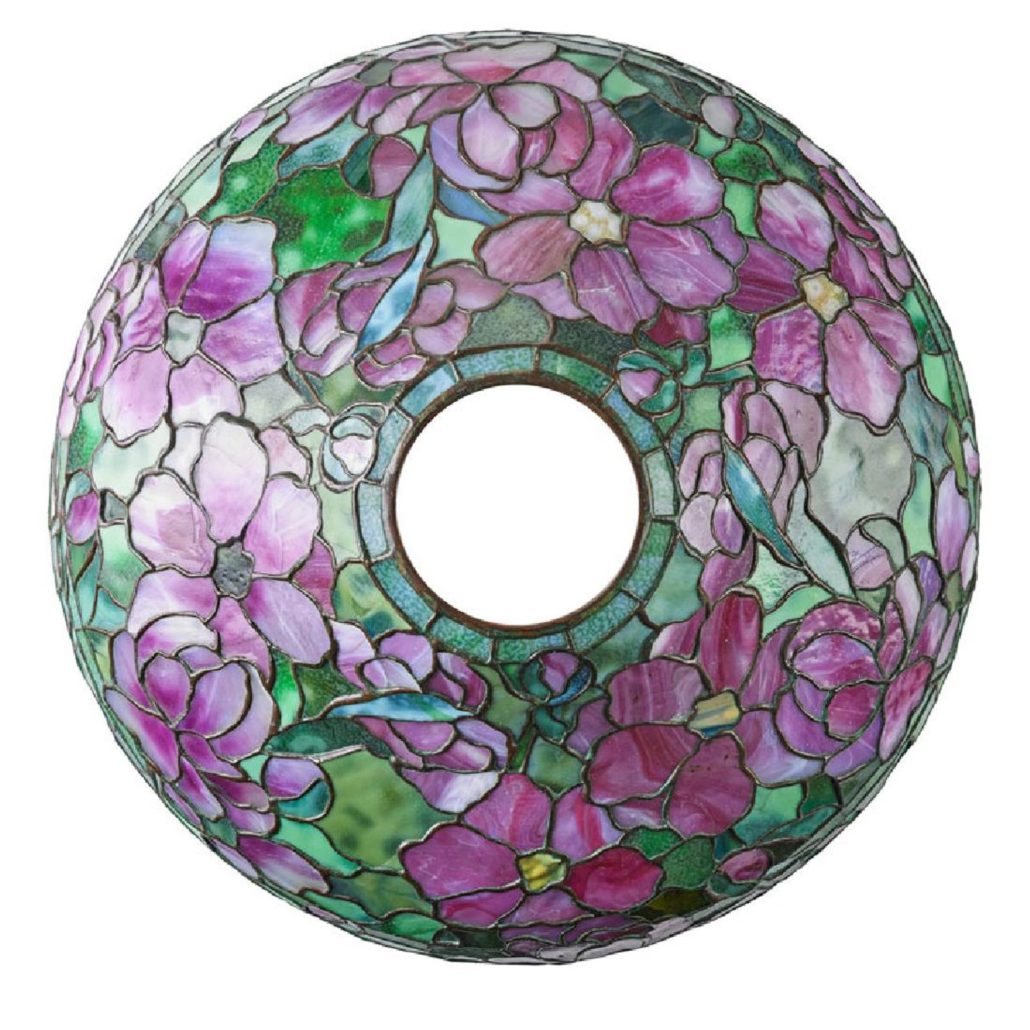
The quality of the actual glass Tiffany used in its lamps was superior, as were many of the fabricators who chose the glass for specific lamps, Rago said. He explained that, for example, one could line up 100 Daffodil lamps and no two would be the same, even though the basic design elements were the same in all of them. “The same lamp could sell for $20,000 or $100,000, depending on the glass used and the skill of the artist who assembled the pieces,” he said.
Talented designers, high-end materials and world-class craftsmanship are the reasons why art-glass lamps of the Art Nouveau period continue to brighten homes today as they did a century ago.
# # #


